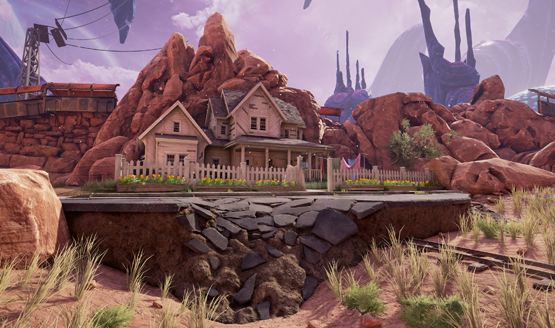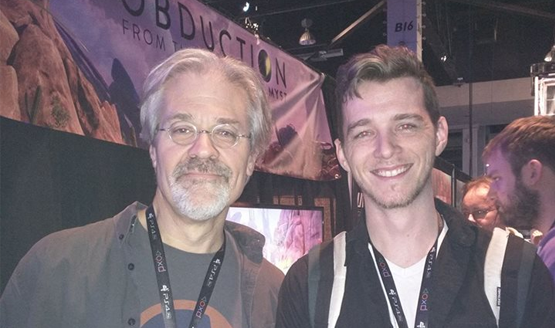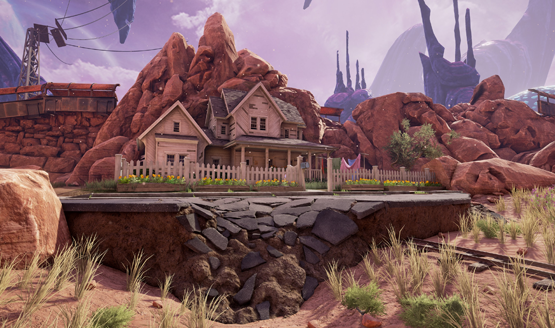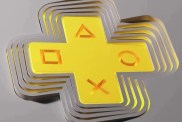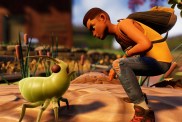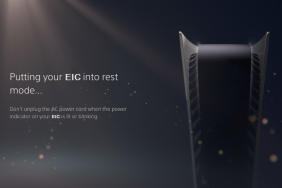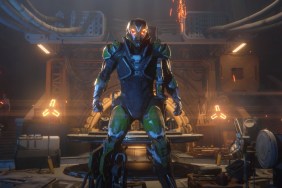It’s not every day you have a chance to talk to one of your childhood icons, but writing for PlayStation LifeStyle has given me many such opportunities, like my chat last month with Myst creator Rand Miller. Myst was the game that elevated computer entertainment for me, and made me realize that games were more than just children’s toys or silly hobbies. It would be years before that realization took a firm hold, but Myst was always the catalyst that started my fundamental appreciation of games as something more. What Myst did for me personally was nothing compared to how it evolved the medium and helped to push CD-ROM drives for computers to the general public. It could be argued that Myst is the video game equivalent of The Beatles, inspiring future game creators and setting a foundation on which many modern games have been built.
It’s been more than 23 years since Myst’s release, and creator Rand Miller is not resting on the laurels of early success. In 2016, he released the Kickstarter backed Obduction for PC, a spiritual successor to his CD-ROM classic, with an Oculus VR version that quickly followed. 2017 will see the launch of Obduction on PlayStation 4 and PSVR, the first time that Cyan has ever worked natively on consoles (previous console ports were not handled in house). I got the opportunity for a face to face with Miller about his experience in game development, people that he’s inspired over the years, and those that have influenced him.
PlayStation LifeStyle: So you are Rand Miller, founder of Cyan, creator of Myst, Riven–
Rand Miller: Yup.
PSLS: Legendary games really.
RM: Legendary! (laughs) I’m old, that’s what it means! Yeah, I’ve been around a long time.
PSLS: Legendary is a nice way of saying that.
RM: I like legendary. That sounds better, yeah.
PSLS: You’ve been around the industry for 25 plus years. What has been your observation as you’ve seen video games grow and evolve over that time?
RM: Well there’s jaw drop moments that may come every now and then. The early ones are weird cause it’s simple things that people don’t appreciate that I had to live through, like you can have a computer in your house. I mean I was making computer games before you could have a computer in your house. And I bought the first Magnavox Odyssey game machine. I was part of all that. I’ve watched it change. Having something color, color graphics, and then real time 3D stuff. All these things are like these epic moments in gaming that have blown me away. Now, you know, my jaw is mostly just on the floor.
PSLS: Have each of those moments helped to boost you forward? Have they given you the kick that you need each time to move forward with new games, new ideas?
RM: Yeah! Oh, that’s actually a great question. It feels like, and I would assume everybody feels that way, but when you get new boost of technology… Like I remember starting Myst. All we had done up to the time we did Myst was hand draw things. My brother’s the artist, he would draw images for kids’ games that we were doing, and they were amazing, but for Myst we wanted this to feel like a real world. We wanted it to feel like someplace you lost yourself in, and then we found 3D rendering software. It wasn’t real time, but it would allow you to make these images that looked… started to look real, and we were blown away. We knew what our course would be for that game.
From there, as real time 3D started to get more and more realistic, again it gives you a kick in the ass and says ‘wow, oh my gosh, the stuff that we were doing only with still images back in the day is now in real time,’ and then to have all that power on a console is amazing, and the leap to VR is insane and motivating. So yeah, every one of those makes me not want to retire.
PSLS: Myst is credited by a lot of developers and a lot of games… you’ve got The Witness for example, Jonathan Blow, a lot of his ideas were inspired by Myst. Coming from that, where you were the original person to inspire these people, and then you’re still making games as well, who inspires you at this point?
RM: They inspire me! It’s an iterative process where I think everybody inspires everybody else. If all you do is kinda sit in your box, you lose a little something, so it’s nice. Jonathan Blow is a great example. He wasn’t inspired to do something just like Myst, he was inspired by Myst to do the things he likes, which is the intricate puzzles, and the puzzles that educate you as you go. He built an island, but it’s not like Myst. It’s a whole different experience. It’s just an aspect that he took away. And I love that. Even other indie titles, like let’s say Dear Esther. It’s arguably a game, or not a game, but there’s one aspect of it that is just exploring this kinda cool – you know, depending on how you look at it. Anyway, all of those things, even when I play them are just like ‘oh my gosh, this has things in it that I want to do.’ I don’t want to copy those things, but they inspire me to the next level.
PSLS: With Obduction, what were some of those things that pushed you to the next level? There’s a decidedly Myst feel to it, it still feels like a Rand Miller game, a Cyan game, but it also feels like it’s got a lot of influences from other places as well.
RM: Let’s face it, every shooter I’ve ever played as they’ve progressed– I mean, I remember playing Tomb Raider and thinking ‘oh my gosh, this is incredible! It’s really cool doing this in 3D!’ I had to shoot… what was it? The Nazis and the dogs, but once that was done it was a really cool feeling to get to explore. Assassin’s Creed, where there’s this feeling of being able to explore places, I mean those all are inspirational on a different level. These feel like worlds that I’m getting into. The friction they use I’m not into as much. There’s plenty of people doing that, they use bad guys and weapons. There’s plenty of that. We use puzzles to slow people down, but I’m inspired by the visuals and the size of the worlds and all those things over the years. It’s just improved in amazing ways.
PSLS: With Obduction, or really with any of your games, how difficult is it to tell a story while remaining remaining purposefully oblique and hoping that people will pick up on these things, but also creating a coherent game where if people don’t pick up on it, it’s ok?
RM: We did this with a little bit of trepidation. It was nice to have the Kickstarter behind it because it pays some of the bills, but opening up to the larger market a decade or two after the Myst timeframe is kinda weird because it’s a whole different generation. This game’s definitely different, it doesn’t spoon feed you. You have to dig, and we weren’t sure that people would know how to look at it. We sent it out for reviews and didn’t know what would come back, so it was very, very satisfying to get the good reviews. And the comments are exactly what we wanted. It’s not going to be everybody, you know, there are some bad ones: ‘I don’t get this, I played it for an hour and I’m just lost completely’ and it’s like ‘Yup, pretty much.’
PSLS: But you almost accept those, and are almost like ‘thank you! I’m glad that there are some people out there that are lost!’
RM: Yeah, yeah, exactly. I’m sorry, this may not be your game, there’s plenty of other stuff for you, but it’s been as far as we’re concerned, overwhelmingly positive, like this is a nice diversion from anything else that’s out there. And we love that. It’s not easy. I’ve said this recently. It’s really hard weaving– it’s the pillars of what we do, which is weaving the story, the gameplay mechanics, and the environment together in a way that feels like it’s balanced. That story’s got to support both of the other two, the gameplay… you can’t have a puzzle in the game that all of a sudden feels like, well, that wouldn’t be here, that wouldn’t fit the story. And you can’t have part of the story that is just out of the blue.
All three, the environment, the story, and the mechanics, have to fit. That’s what we struggle with the design during the entire development. It’s not like we got it done in a month and said ‘now just make this.’ The entire development was done with little tweaks in designing this thing so that it was revealed. And when people get it, when they really have those aha moments, whether it’s with a story element that blows your mind, or thinking of a puzzle solution while you’re driving to work the next day, those are… that’s what we live for. That’s really satisfying for us.
PSLS: Wanting people to play the game and think about the game beyond just the game.
RM: Yes! Whether you want to or not, we want it to eat at you a bit. And it’s weird. You know, sometimes your mind works in the background. ‘What was that actor’s name?’ and then two hours later for some reason it just pops into your head. I think the same thing here. There’s some kind of something churning in the background and suddenly you’re like ‘oh my gosh! I should try this!’ That’s a really satisfying feeling in our games. I think people like that.
PSLS: The move to console is something that you haven’t done natively before.
RM: Right.
PSLS: You had the ports way back in the day but it’s been a long time since Cyan’s had a console game. How are you expecting that reaction to… is it different jumping into that world, not just the development world, but the fans on consoles as well?
RM: You know, frankly, I don’t have a gaming PC at home. I have a console and I use my Mac laptop, so my games are console based. My wife and I joke– I don’t have a PS4 yet. We joke that for Christmas we’re not getting each other presents, we’re just getting a PS4. It’s satisfying. It’s probably much more satisfying for Obduction than it was for Myst. I don’t want anybody to get the wrong impression, but Myst definitely was designed with us in front of a computer with a mouse and a screen, and the interface works that way. Obduction is a real time 3D game. That’s what it’s been from the ground up. A lot of our effort, whether its programmers or artists, have gamepads on their desks. They prefer that for moving around. It’s a much more natural fit than Myst was to try and get on a console.
PSLS: Of course we’re PlayStation LifeStyle, so if there was one thing you wanted to say to the PlayStation LifeStyle readers about the game, about your studio, about development, about anything, what would it be?
RM: Boy, oh boy. I think the one thing that I would get across is that we are really happy to make worlds. A lot of time we don’t even consider what we make to be games. We consider them to be real places, and the continuity that we weave into it is because we kind of cherish that fact, that we are building a place that feels like it’s got an entire history to it. We write histories that people never know about to keep us honest and keep us true. If you can get that, if you can latch onto that, even though you’re used to playing other kinds of games, this will be a nice… a whole different kind of feel than you would get elsewhere.
We’d like to thank Rand Miller for indulging me as I fanboyed out, and for allowing us the opportunity to pick his brain about his experiences making games. You can follow Miller on Twitter @randemtweets, Cyan @cyanworlds, and get updates on Obduction @obduction.
